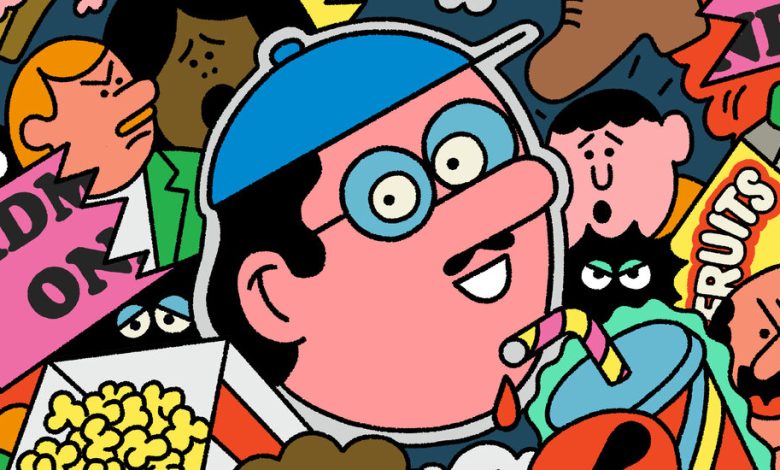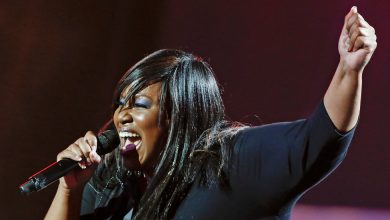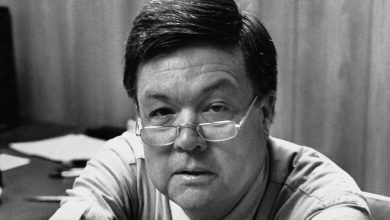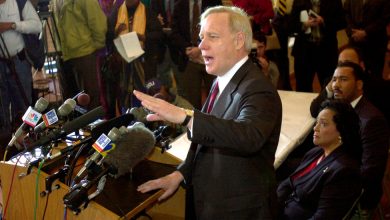For One Weekend, We Remembered the Magic of Movie Theaters

It seemed like a miracle. The Cobble Hill Cinemas, a neighborhood joint that opened in the 1920s as the Lido and that served for decades as a venue for B-movie action films, was packed on what would ordinarily be a dead Monday night — and without a single Lazy Boy recliner, goat cheese pizza or other modern enticement in sight. I was there with 200 or so other patrons, a gloriously mixed crowd, to see “Oppenheimer,” one half of the Barbenheimer cultural moment. When the bomb finally went off in the New Mexico desert — this fulcrumatic moment in our species’ history — it was beheld simultaneously, an exhilarating common experience, which is exactly what the movie house is supposed to deliver. In the end, it didn’t matter if you liked the picture or not. What mattered is that we’d seen it together.
After a few years in which the pandemic and streaming platforms combined to break Americans of their movie theatergoing habits, we’d surged back joyfully, triumphantly, to theaters, producing the fourth biggest domestic weekend of all time. For a moment, it was possible to forget the grim realities that still linger for the cinema business, circling like vultures. The actors and writers unions (I am a member of the latter) are still on strike with no end in sight. With far fewer products in the pipeline, there won’t be many Barbenheimer-shaped rabbits to pull out of the hat anytime soon. AMC is in trouble. So is Regal, which narrowly avoided having to close its theater in Union Square. On the day before the blockbuster weekend, the Regal UA in Staten Island, one of the last remaining theaters in that borough, closed its doors for good. The 2016 demise of the Ziegfeld means that the largest single-screen theater in Manhattan is now the relatively diminutive 571-seat Paris — which tellingly was saved by, and is run by, Netflix.
In the time of streaming and 146-inch TV screens, the simple act of going out to the movies feels contrarian, even subversive. It also feels endangered. That’s grim news, because the beauty of going to the movies was never just about the films on the screens — it was about the way we all gathered to watch them.
I began my own New York film-going odyssey in 1952 at the age of three. My parents took me to see to “The Greatest Show on Earth,” at Radio City Music Hall. It’s among my earliest memories: entering the grand palace of the Rockefellers via the stage door, climbing the fire-escape catwalk and stepping into the projection booth, where I was greeted by the smiling face of my Uncle Sam, a brother in good standing of Local 306 of what was then called the Moving Picture Machine Operators Union.
I saw many of my first pictures in whatever plaster of paris Egyptian temple, Moorish Alhambra or faux-Roman Forum theater my uncles happened to be in working at the time: the Commodore in Williamsburg, the Loew’s Kameo on Eastern Parkway or the Fox Crotona in the Bronx. Masters of the massive Simplex projector, strikers of the alchemical carbon arc, like Yahweh before them it was my uncles who declared “Let there be light,” and light there was. High above the crowd, they were the captains of the ship, navigators of the dream.
I was six when I started going to the movies without my parents, attending kiddie matinees with my buds at the Mayfair Theater on Fresh Meadow Lane, where “matrons” in white uniforms carried nightsticks in case we got rowdy during a showing of “The Man From Planet X.” Soon we were on the Q17 bus taking in a steady diet of Roger Corman and Vincent Price fare at the baroque Loew’s Valencia on Jamaica Avenue in Queens and, by high school, we frequented Manhattan’s revival houses like the New Yorker, the Bleecker Street Cinema, and Jonas Mekas’s “underground” Film-Maker’s Cooperative on West 41st Street, where they had one of those soda machines with the drop-down cups offering selections like “LSD-25.” What was that, we wondered.
There were so many theaters in Manhattan back then: the Baronet, the Coronet, the Cinemas 1, 2 and 3, the Embassy 2, 3, 4, the Art and 8th Street Playhouse, the Symphony, the Riviera. On Avenue B was the Charles, where they once played a bootleg of the Zapruder film as the feature presentation. Feral youth seeking the light, we knew the quirks and contours of almost every theater in town. Those were the days when the place the film was seen was inseparable from the movie itself. You didn’t just see “The Guns of Navarone”; you saw “The Guns of Navarone” at the Criterion.
What determined the character of a great theater wasn’t the films, or even the location, but the people, the crowd. Ambience was key and library silence was not necessarily observed. There were the ornery regulars at the Museum of Modern Art, the smell of tuna fish sandwiches filling the auditorium. But for audience participation, nothing matched 42nd Street, a.k.a. the Deuce. Redevelopment propaganda said the street’s theaters existed primarily for porn, but for us, the place functioned as a nonstop genre film festival, with westerns (heavy on the spaghetti) at the Times Square Theater, action pictures at the Selwyn, horror at the Lyric and “foreign” fare at the Apollo. Anything could happen there. We witnessed a guy jumping up onto the stage during “Putney Swope” with a boot in one hand and a saltshaker in the other, demanding to know who threw the things out of the balcony. There was the time someone screamed for the whole theater to hear, “You’re sorry? You pee on my date and you say you’re sorry?”
To us, it was all part of the show.
For a moment, at least, the Barbenheimer phenomenon brought back the sensation of the movie theater as a semisacred public place, a space where we congregate to have an experience, made all the more transcendent by having it together.
Perhaps it’s best to take the long view. The other day, while walking with my granddaughter in Jackson Heights, I passed by the old Earle Theater where decades ago I saw a film called “Mr. Sardonicus.” Telling the tale of a man whose face is frozen into a hideous visage after digging up his father’s rotting corpse to retrieve a winning lottery ticket, “Mr. Sardonicus” ended with an on-screen appearance by the film’s producer, William Castle. A man who loved a gimmick, Mr. Castle was there to conduct what he called a “Punishment Poll.” Those of us who felt Mr. Sardonicus had been punished enough were told to raise a cardboard sign with a glow in the dark thumb on it, provided by the theater management. If you thought he should continue to suffer you turned your thumb down. Needless to say, in this bit of preteen movie house democracy, the nays won.
As I passed, I saw that, with its Art Deco stonework facade and marquee still intact, the Earle has been repurposed as the Ittadi Garden and Grill, a Bangladeshi steam table cafeteria restaurant.
“This place used to be a movie theater,” I mentioned to a young woman who was ladling out plates of lollipop chicken and beef bhuna.
“I heard that. But I am 22 so I don’t remember it,” she said. “But I do hear things — at night, when we are closing up. People talking to each other, like in a movie.” She laughed. “Don’t look at me like I’m crazy.”
I didn’t think she was crazy, not at all.
Mark Jacobson is the author of “American Gangster: And Stories of New York,” “Pale Horse Rider” and the novel “Gojiro.”
The Times is committed to publishing a diversity of letters to the editor. We’d like to hear what you think about this or any of our articles. Here are some tips. And here’s our email: [email protected].
Follow The New York Times Opinion section on Facebook, Twitter (@NYTopinion) and Instagram.



